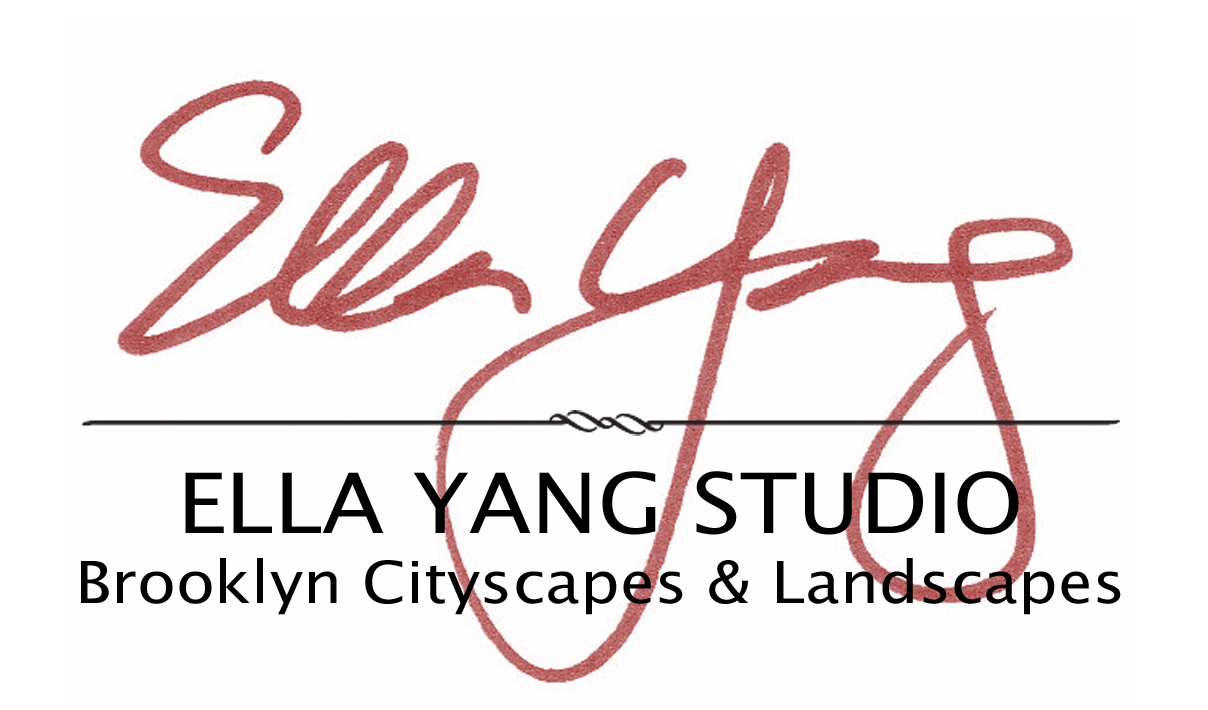Fairfield Porter at Tibor de Nagy
Some people have said that my paintings in their early stages look like Fairfield Porter's. (But then they become Yangs!). Given my relatively meager art history education (it was never a favorite subject, to be honest), I hadn't seen a lot of Porter's works until more recently, say in the last 10 years. A collector/friend pointed out to me that Tibor de Nagy has an exhibit now (through December 3) and I gladly went to see it. This exhibit comprises a mixture of genres - portraits, landscapes, still life, and includes a few older works that I would never have guessed were even his. In any case, there were a handful that really resonated with me.
This little one caught my attention right away (and my terrible cell phone camera does not do it justice). He clearly painted it swiftly and confidently. The colors in the sky are remarkably luscious and luminous.
He applied the paint in the sky in thick, oily swaths of luscious, melding subtle pastel colors ranging from blush of pink to barely gold to a pale green-tinged blue. These colors stand out against the muted, mid-tone, and relatively thinly applied colors of the rest of the landscape, making the sky and atmosphere the center of attention. This painting just glows! (I would have loved to bring it home, but I was short about $250,000).
Then there was this very different one which I might not have guessed was a Porter given the hectic brush marks and odd little figures. The path between the figures and the table and chairs to the right seems almost dangerous, as if the shadows themselves are spikes or thorns and scratchy! My eyes search for the "safe" places, the areas between the things. But the light has his signature luminosity.
I'd like to end with this one, as it seems to embody what makes Porter's paintings so interesting and informative for me. Even with a somewhat muted palette, he deftly manages to keep his lights bright and his shadows deep. What intrigues me about this one is how the main subject of this painting is the space between the many different objects - house, sheds, fences, shrubs and trees - and not one or more of the objects themselves. In fact, the trees nearly dissolve into the sky with their branches barely articulated. You know they are trees, but they are more like symbols. Ingeniously, the space is not static because the objects are located in planes that recede from the picture plane, but you remain contained within the frame thanks to the tree branches that end at the edge of the canvas. The viewer's eyes, thus, contentedly may rove around repeatedly, noticing the diverse brushstrokes and subtle variations of color. Yes, this would have been nice to cart home, too, if I had recently won the lottery!
Don't miss this quiet gem of an exhibition.



